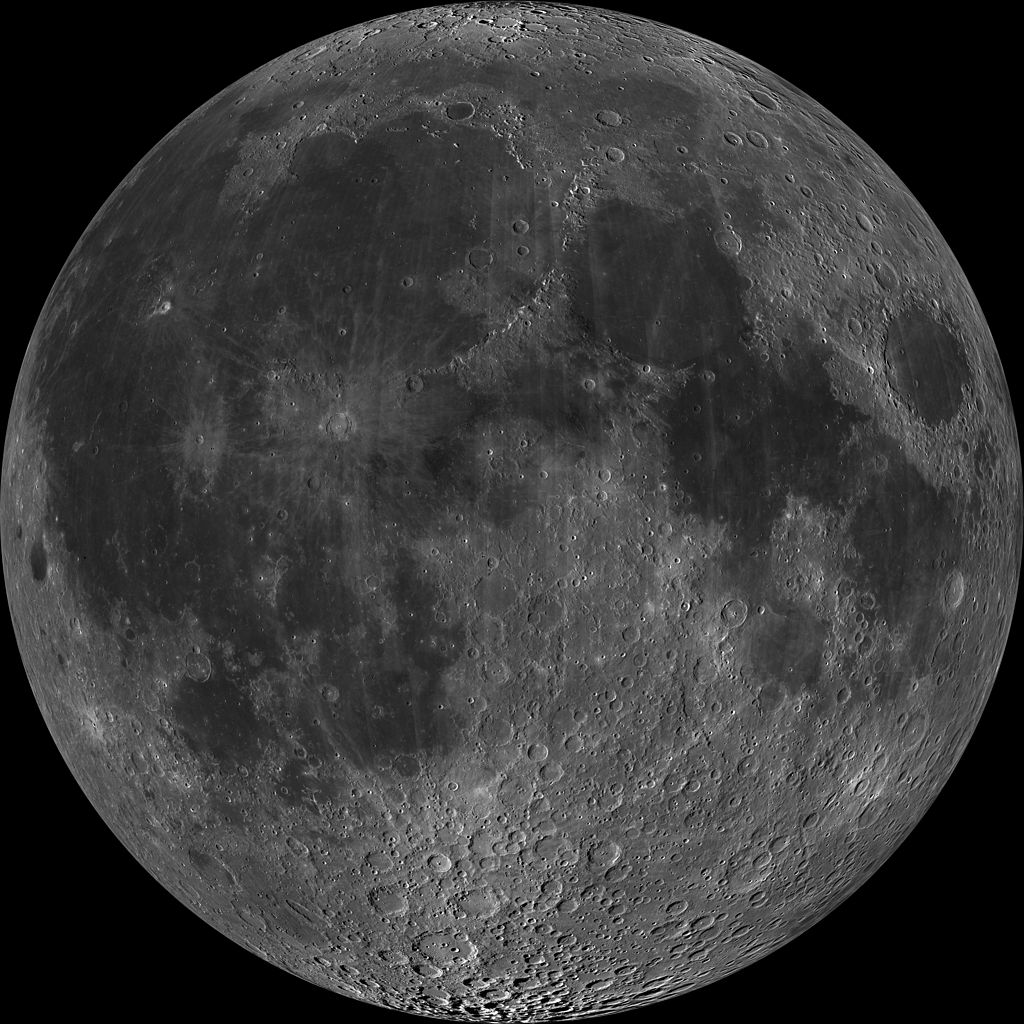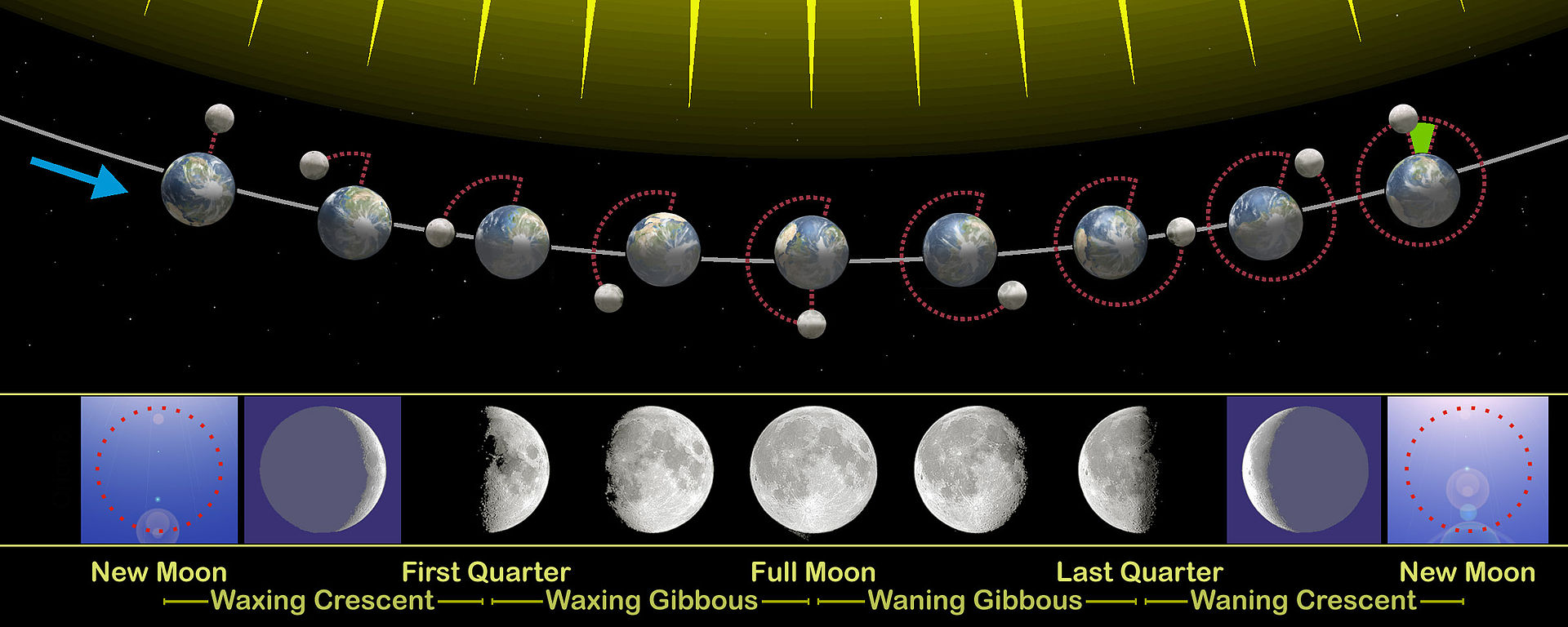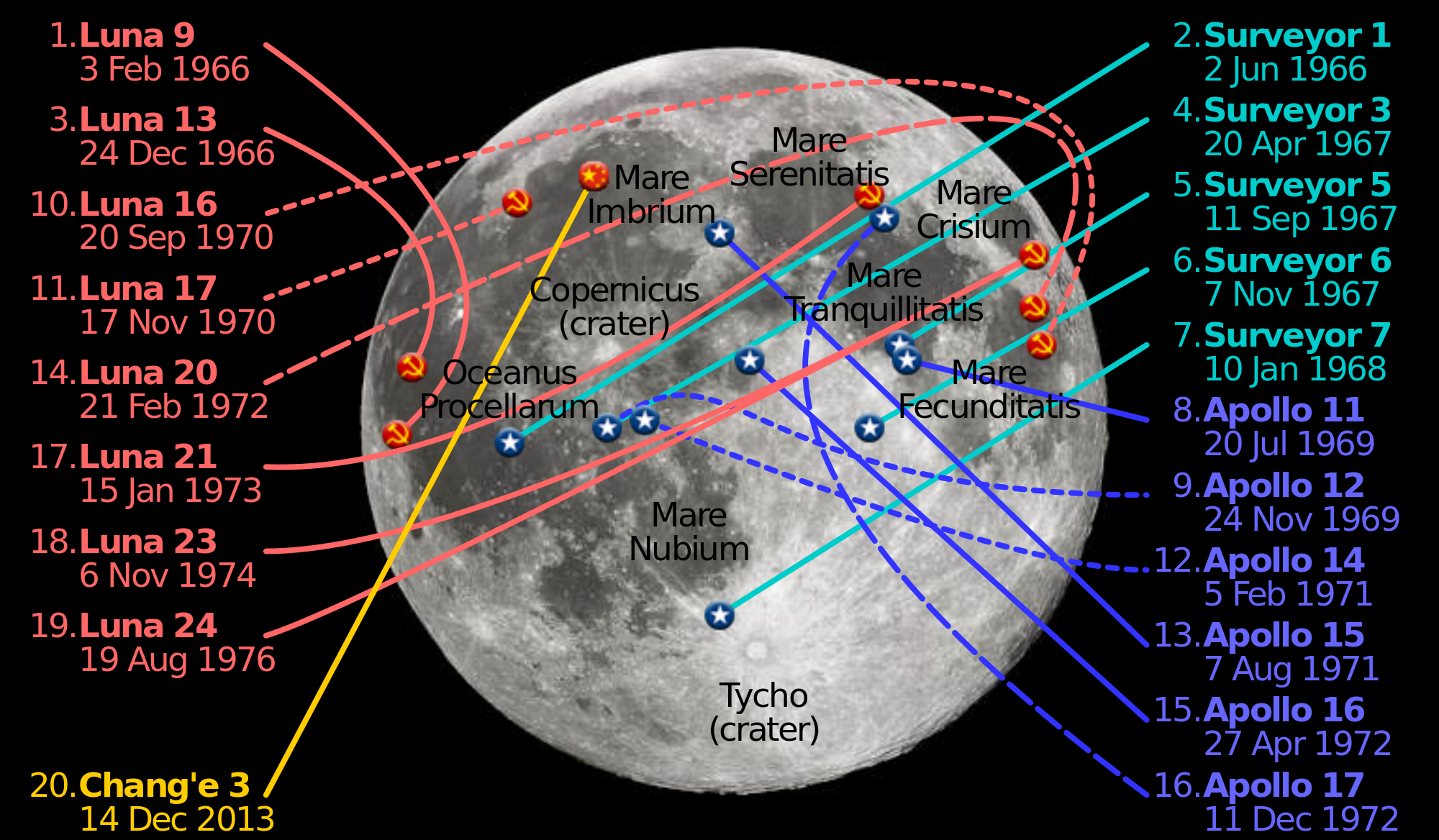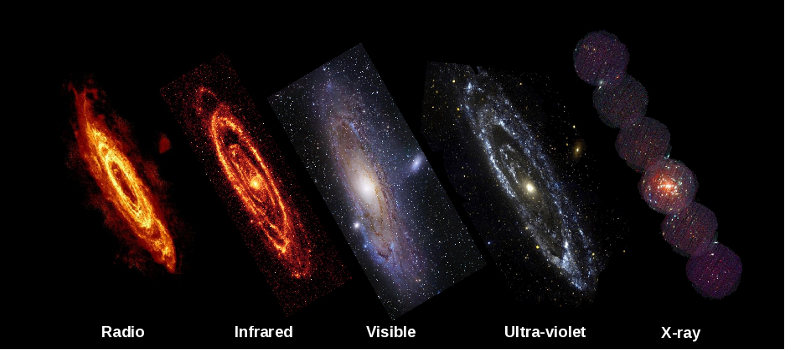Section 1.2: The Moon and its influence
Moon
Our Moon is the only natural object orbiting the Earth. Other planets have different numbers, some with none and some with more moons, Jupiter has the most in our Solar System at 67 (as of November 2014). Our Moon is made of rocky material, and like the planets, it does not emit light. What light we can see from the Moon is in fact reflected from the Sun. The effect of tidal forces on the Moon's rotation means that we always see the same side. Looking closely at the surface, you can see lots of craters from impacts.

The near-side of the Moon. (credit: NASA/GSFC/Arizona State University)
ACTIVITY: Take a look at the surface of the Moon and identify items on the surface. This will require you to set up a free account with Zooniverse to be able to log in and do the activities. This account will be useful for activities further on in the course. Once you have an account, you can click any of the links under the 'Play' heading. Without an account, you are still able to access the 'Explore the Moon' section and learn more about the Moon.
What causes the Moon to go through phases?
The phase of the Moon (how much of the Moon is in sunshine, as seen from Earth) depends on where the Moon is in its orbit around the Earth. The orbit of the Moon around the Earth takes approximately one month (which is where the word originates - literally "Moon-th"), hence why the cycle takes this amount of time.
When the Moon is between the Earth and the Sun, the sun is shinning onto the far side of the Moon and we are facing the side of the Moon that is totally in shadow - we call that time of the month the New Moon. A fortnight later, and the Moon has moved around the Earth to the opposite side compared to the Sun, and the side of the Moon that faces us is now bathed in full sunlight - it's a Full Moon.

The phases of the Moon (By Orion 8 (Own work) [CC BY-SA 3.0 (http://creativecommons.org/licenses/by-sa/3.0)], via Wikimedia Commons)
How are tides created on Earth?
The Earth has a gravitational pull on the Moon, which is what keeps it in orbit. However, any object with mass exerts some gravitational pull, and so the Moon also exerts some gravitational pull on the Earth. This pull, in combination with the pull of the Sun and the rotation of the Earth is what causes our tides. The height of the tides is primarily affected by the interaction between the pulls from the Moon and the Sun, but can also be affected by the distance of the Moon from Earth.
Visits to the Moon
There have been a number of landings on the Moon, mostly from unmanned spacecraft.

Moon landing sites.
The first successful manned mission to the Moon was the US Apollo 11, which landed on the Moon on 20th July 1969.
ACTIVITY: Watch the footage of the Moon Landing

